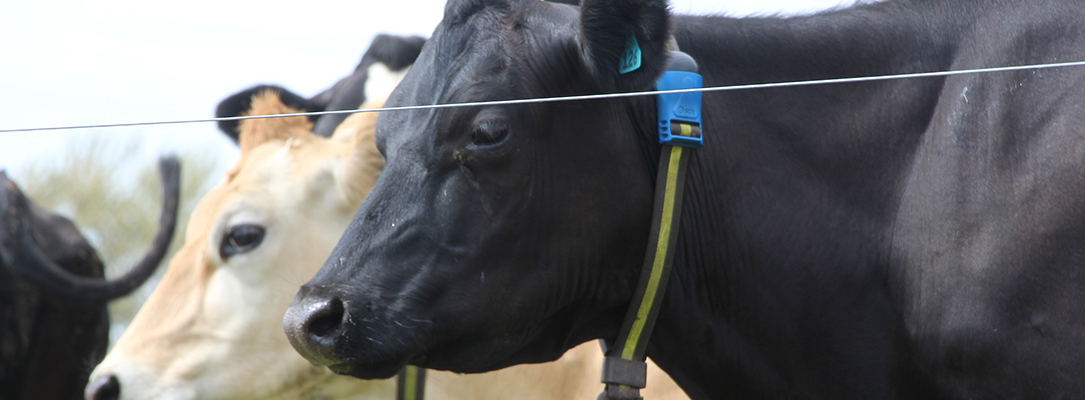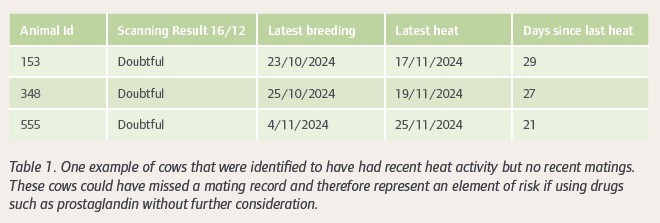
During this year’s mid-mating scanning, we leveraged collar technology to enhance the insights gained from traditional ultrasound scanning. By reviewing collar data on heat activity, we were able to gather valuable information about cows that were identified as non-pregnant at the time of the scan.
One key discovery was that some cows had a heat event that was more recent than their last breeding date. This is significant, because it suggests the possibility of an unrecorded mating that is not yet detectable via ultrasound. For example, if it has been fewer than 30 days since the breeding occurred, the early pregnancy might not yet be visible on the scan.
This situation can arise when a cow has been in heat, drafted, and then mated, but the event was not recorded or was misrecorded in MINDA. Non-pregnant cows identified at this stage may undergo treatments that could jeopardise an undetected early pregnancy. Without the integration of collar data, these subtle yet crucial details could be missed.

It is important to stress that the issue of ‘phantom cows’ (non-pregnant, non-returning cows) in seasonal systems is still very relevant. It is completely normal to find that 8-10% of your empty cows were mated only once and never returned, despite not being pregnant at the final scan. These cows continue to represent a key focus for improving herd reproductive performance, and it is worth the effort of identifying them to reduce the impact on overall reproductive performance.
We recommend taking proactive measures during mating to identify these cows and make informed decisions. If you are using collar technology, we recommend that you screen cows identified as empty for any recent heat activity. Cross-check these records with your AI book or mating records, so as to confirm whether a mating occurred and whether it was properly recorded.
If a cow’s record is unclear or incomplete, consider using a CIDR programme as a first-line option for intervention. Re-scan the cow before administering prostaglandin (PG) to minimise the risk of inadvertently treating an early pregnancy. The key is to utilise all available tools, such as collar data, thorough record-keeping and veterinarian recommendation, to make more accurate and proactive decisions.
By integrating scanning data with collar technology and being vigilant about phantom cows, you can significantly reduce reproductive inefficiencies in your herd. If you have questions about this process or would like tailored advice, do not hesitate to contact us at cowsmart@vetlife.co.nz